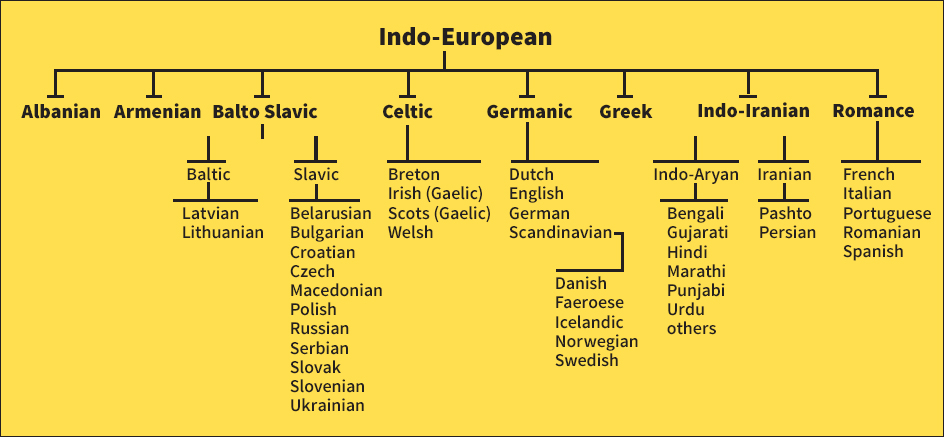Welsh language is the national language of the people of Wales and one of the oldest languages in Europe. Between one-fifth and one-fourth of the population of Wales speaks Welsh. It is the daily language in many sections of western and northern Wales.
Welsh is a melodious and expressive language that is well suited to poetry. The most unique qualities of Welsh are the clear pronunciation of each syllable, the pronunciation of every vowel in every word, and the crisp pronunciation of each consonant.
Welsh grammar
Nouns
in Welsh are masculine or feminine in gender. Nouns are made plural in one of several ways. The most common way is by adding a plural ending. For example, tad (a father) becomes tadau (fathers). A unique feature of Welsh is mutation—that is, a change in the initial consonant of a word in certain circumstances. For example, cath (a cat), becomes y gath (the cat).
Adjectives,
when used with a feminine singular noun, may take a feminine form. One way in which they are made feminine is by mutating the initial consonant. For example, bachgen da (a good boy) becomes merch dda (a good girl). A plural feminine noun takes the masculine form of the adjective.
Verbs
in Welsh have forms for all tenses (see Tense). In regular verbs, the simple present and future tense forms are the same. The person of the verb is expressed by adding endings to the stem of the verb. For example, the stem of dysgu (to learn) is dysg. The present tense forms of the verb are dysgaf (I learn), dysgi (you learn), dysga (he learns), dysgwn (we learn), dysgwch (you learn), and dysgant (they learn).
Word order
of simple sentences in Welsh differs from the order of English. The usual English order is subject, verb, predicate (the word or words in a sentence that tell what is said about the subject). The usual Welsh order is verb, subject, predicate: John is in the field is, in Welsh, Mae John yn y cae (Is John in the field).
Pronunciation.
The letters j, k, q, v, x, and z are not used in modern Welsh, although j is used in words borrowed from English. Some common Welsh sounds cause problems for non-Welsh speakers. But most of the sounds have English equivalents. For example, a single f is pronounced as the English v. The Welsh dd is pronounced like th as in the and bathe; ff as in staff; and ph as in phase.
One of the sounds that does not have an English equivalent is the Welsh ll. It is pronounced by placing the tongue in the usual position for English l and then pronouncing an h sound. Welsh y is a vowel. Its pronunciation varies according to its position in a word. It sometimes has the sound of y in funny, but it may also sound like the u in funny. The Welsh w may be a vowel or a consonant. Pronunciations vary from north to south Wales.
Development
Beginnings.
The Welsh language is part of the Celtic branch of the Indo-European family of languages (see Language (Language families)). The languages closest to it are Cornish and Breton, the language of the people of Brittany, in France. These languages make up a branch of languages called p-Celtic. Irish, Manx, and Scots Gaelic belong to a branch called q-Celtic.

Scholars believe that Welsh was a spoken language as early as the A.D. 500’s. Since then, its grammar has changed little, but its vocabulary has changed greatly. Many common Welsh words have been borrowed from other languages, including English, Irish, and Latin.
In 1536, England’s king, Henry VIII, passed an act joining the governments of Wales and England. From the mid-1500’s until the late 1800’s, the English government tried to suppress the Welsh language. In many schools, a teacher would punish a pupil heard speaking Welsh. In the late 1800’s, the schools of Wales gradually reintroduced Welsh.
Modern Welsh.
In the 1900’s and early 2000’s, education authorities, the people of Wales, and the British government have attempted to preserve and encourage the use of Welsh. The Welsh Language Society (Cymdeithas yr Iaith Gymraeg) has been active since the 1960’s. It has successfully lobbied for greater use of the Welsh language in broadcasting, education, and other fields. For example, it campaigned to have Welsh added to formerly English-only road signs.
The British government passed the first Welsh Language Act in 1967 and replaced it with a second act in 1993. The 1993 act gave Welsh a legal status equal to that of English. In 1982, the British government set up a Welsh television channel, Sianel Pedwar Cymru (S4C). The channel broadcasts Welsh programs, motion pictures, and reports on the National Assembly for Wales. In 1993, the British government established the Welsh Language Board (Bwrdd yr Iaith Gymraeg) to promote Welsh.
Many schools in Wales do most of their teaching in Welsh. A wide range of literature and textbooks is published in Welsh, and radio and television stations broadcast daily programs in Welsh. Some Welsh courts have used the Welsh language in court proceedings. Since the establishment of the National Assembly for Wales in 1999, the use of Welsh has also increased in the government.
In some parts of rural western and northern Wales, more than three-fourths of the people speak Welsh. Population movements have also brought many Welsh-speakers to the cities of Cardiff and Swansea.
Welsh is not spoken only in Wales. In the 1800’s, many Welsh people immigrated to North America, and there are communities in which Welsh is still spoken. In Chicago, for example, there are several hundred Welsh speakers. Welsh people founded a colony in Patagonia, in southern Argentina, in 1865. Their descendants in the community speak Welsh as well as Spanish.
See also Welsh literature.
